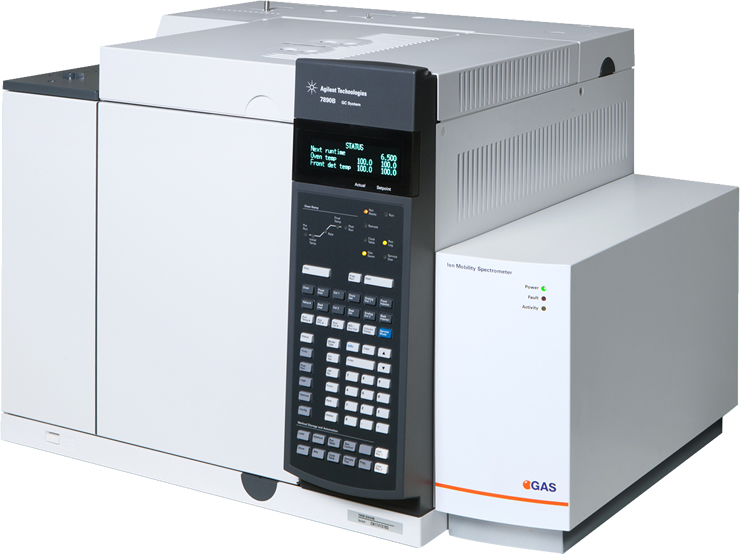IMS

Ion Mobility Spectrometry
What is Ion Mobility Spectrometry (IMS)?
Ion Mobility Spectrometry (IMS) is an analytical technology that separates analyte mixtures into their component compounds and then detects what these compounds are.
Separation of compounds is based on the specific drift times that ionised compounds need to pass a fixed distance (drift tube) in a defined electric field. The drift time of each substance is determined by the mass and geometric structure of its own ions. These parameters determine the number and rate of collisions with the drift tube walls that, in turn, impact upon the speed of transit through the drift tube. An electrometer then measures the resulting ion current as a function of time.
IMS is an ideal tool to analyse gaseous and liquid headspace samples. Its ultra-sensitivity and rapidity make it ideal for situations where quick results are required, when compound levels are low or where analysis is better done on-site rather than in a laboratory.
For more information please click the button below and complete the form
Comparative specifications: IMS vs other techniques
| TD/GC/MSD | PTR-TOF-MS | SIFT-MS | GC/IMS | |
| Deployment | Laboratory | Laboratory | Laboratory | Lab & Point-of-Care |
| Mass range | 1050 amu | 20 – 180 amu | < 300 Da | < 1000 Da |
| Ions | positive | positive | positive | positive, negative |
| Detection limit | ppbv-ppmv | pptv | ppbv | pptv-ppmv |
| Gas consumption | Helium | Helium | Helium | Air |
| Vacuum pump needed | yes | yes | yes | no |
| Measurement time | 60 – 120 min | 30 min | 30 min | 10 min |
| Weight | 96 kg | 170 kg | 212 kg | 18 kg |
| Dimensions (cm x cm x cm) | 88 x 56 x 50 | 56 x 130 x 78 | 90 x 72 x 88 | 45 x 35 x 28 |
| Personnel needed for operation | Scientist | Scientist | Scientist | Technician |
For more information please click the button below and complete the form
